The implants from the Activmotion S DTO range are dedicated to bone reconstruction of the ankle in adults, including the fixation of fractures and osteotomies of the ankle, distal tibia, and fibula.
Activmotion S DTO is a comprehensive range of anatomical plates dedicated to distal tibia and fibula corrections through opening and closing osteotomies, whether via the medial, lateral, or anterolateral approach.
This conservative surgery makes it possible to modify the mechanical axis of the arthritic ankle and thus transfer the mechanical load initially applied to the damaged areas of the joint toward the healthy compartment of the ankle. The damaged cartilage is therefore better preserved, helping to delay the implantation of a prosthesis or the performance of an ankle arthrodesis.
Our philosophy: to offer a complete range of plates specifically designed for the distal tibia and dedicated to this indication.
In addition, our solution includes instrumentation designed to prepare, create, and maintain the appropriate angular correction during the osteotomy.
To assist surgeons in performing the procedure, we also offer patient-specific cutting guides. This option allows the osteotomy to be performed in accordance with the preoperative 3D planning, thereby improving understanding of the surgical technique and the correction to be applied.
Our philosophy:
ankle alignment and preservation.

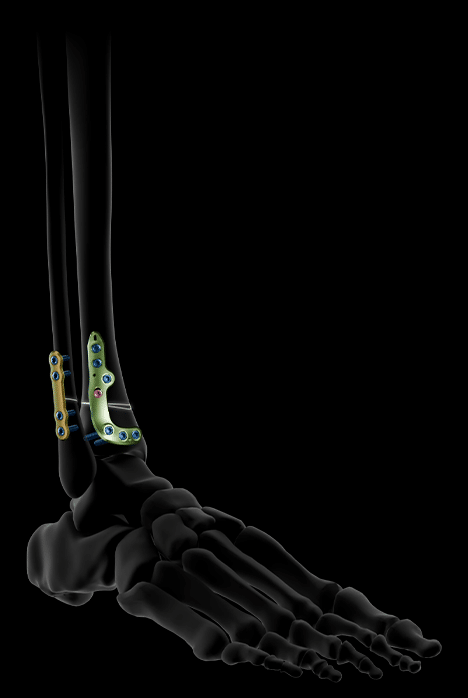
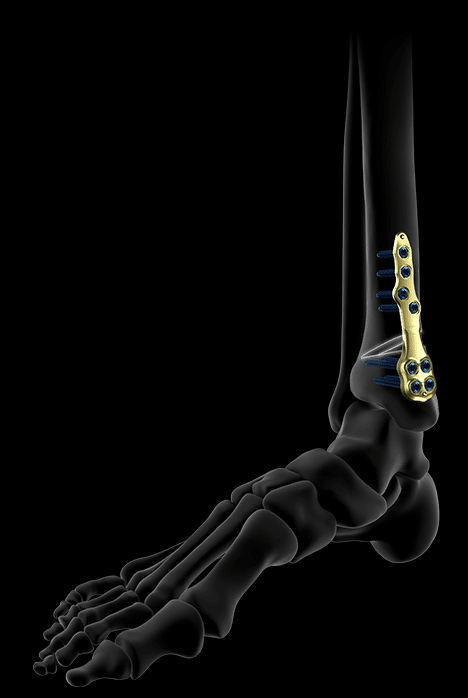
- Flat design
- Stepped design for better bone conformity
These plates are bendable to better adapt to the treated bone anatomy.
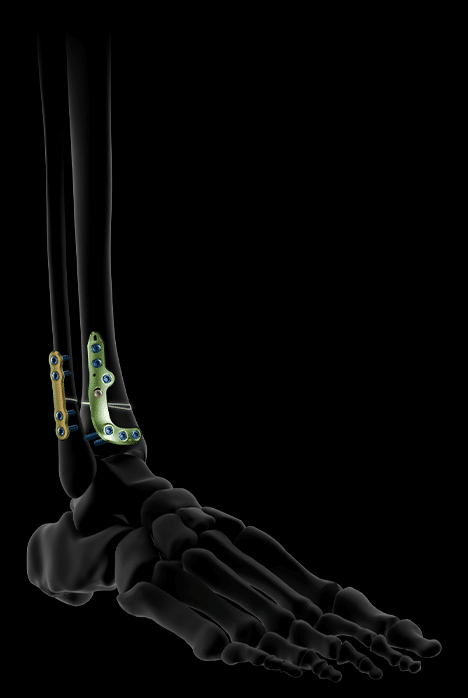
These straight plates are used during associated fibular osteotomies. They are available in two lengths, with 2 or 3 locking holes on each side of the osteotomy, depending on the selected plate size.
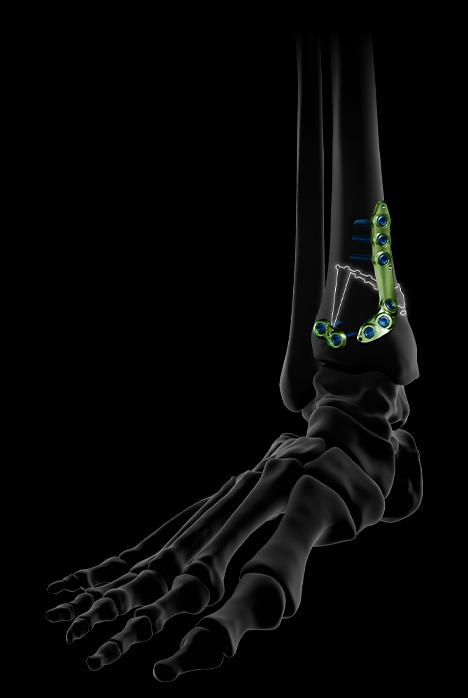
Hemidome ankle osteotomy is recognized in the medical literature as a joint-preserving technique specifically indicated for asymmetric varus ankle osteoarthritis. It is particularly suited for cases involving multiplanar deformity, severe distal tibial inclination, and incongruent ankle joints (talar tilt >4° and varus >10°), where conventional supramalleolar osteotomies may not fully restore joint congruency and alignment1.
To support these demanding procedures, dedicated implants have been developed, featuring:
- Two lengths, with 3 or 4 proximal holes
- An associated anterior hinge plate to stabilize the osteotomy and prevent the risk of hinge breakage during opening
¹ Choi et al., Surgical Correction of Large Talar Tilt in Varus Ankle Osteoarthritis: Lessons from Clinical Experience and a Review of the Literature, J. Clin. Med. 2025, 14, 2781
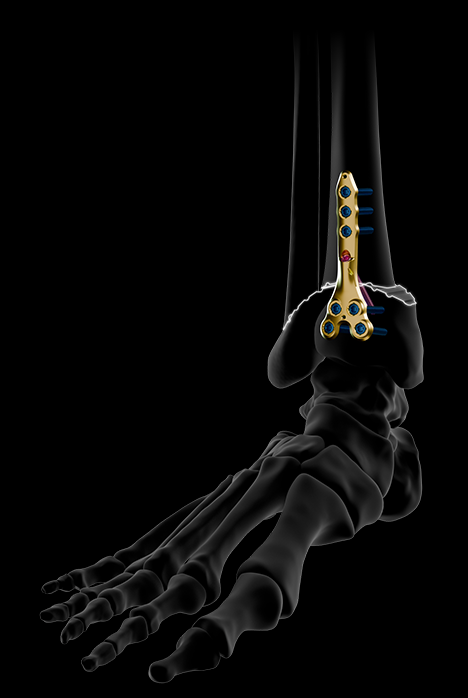
To correct rotational malalignment, we have developed dedicated implants for dome osteotomies.
Our anterior dome plates are available in two sizes and two width (standard or wide head).
They feature an anteroposterior screw that stabilizes the osteotomy site and prevents any posterior opening.
The smooth implant wedges allow the surgical site to be closed without compromising mechanical resistance, while the bendable plates ensure optimal adaptation to various anatomies.






Key features of the Activmotion S DTO range.
- Wide range of plates designed for opening, medial, and anterolateral closing osteotomies of the distal tibia and fibula
- Two distinct designs for the medial opening distal tibial plates, to best cover the anatomical variations encountered
- A thinned profile in the distal tibial part to limit size in an area with a thin soft tissue envelope
- Single screw diameter: Ø3.5 mm
- Patented polyaxial locking system (+/- 10°)
- Instrumentation (including specific patient cutting guides) to combine osteotomy precision and safety
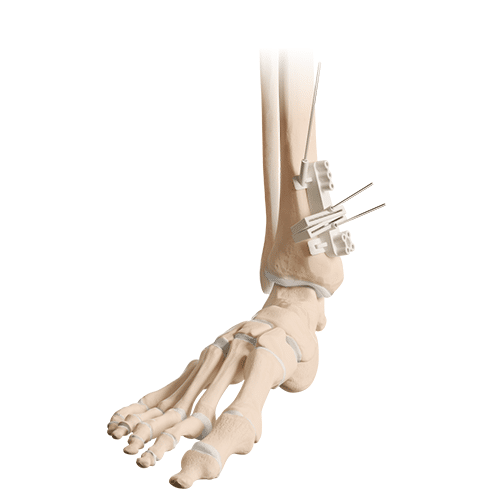
ONE is the patient-specific correction guide developed to support you in both 2D and 3D surgical planning, as well as for performing osteotomies. The production of our patient-specific cutting guides is the result of close collaboration between surgeons and Newclip Technics, to best meet surgical needs and support the surgeon in each procedure.
These solutions are developed based on clinical imaging data, to optimize the anatomical congruence between the material and the bone tissue.
Learn more